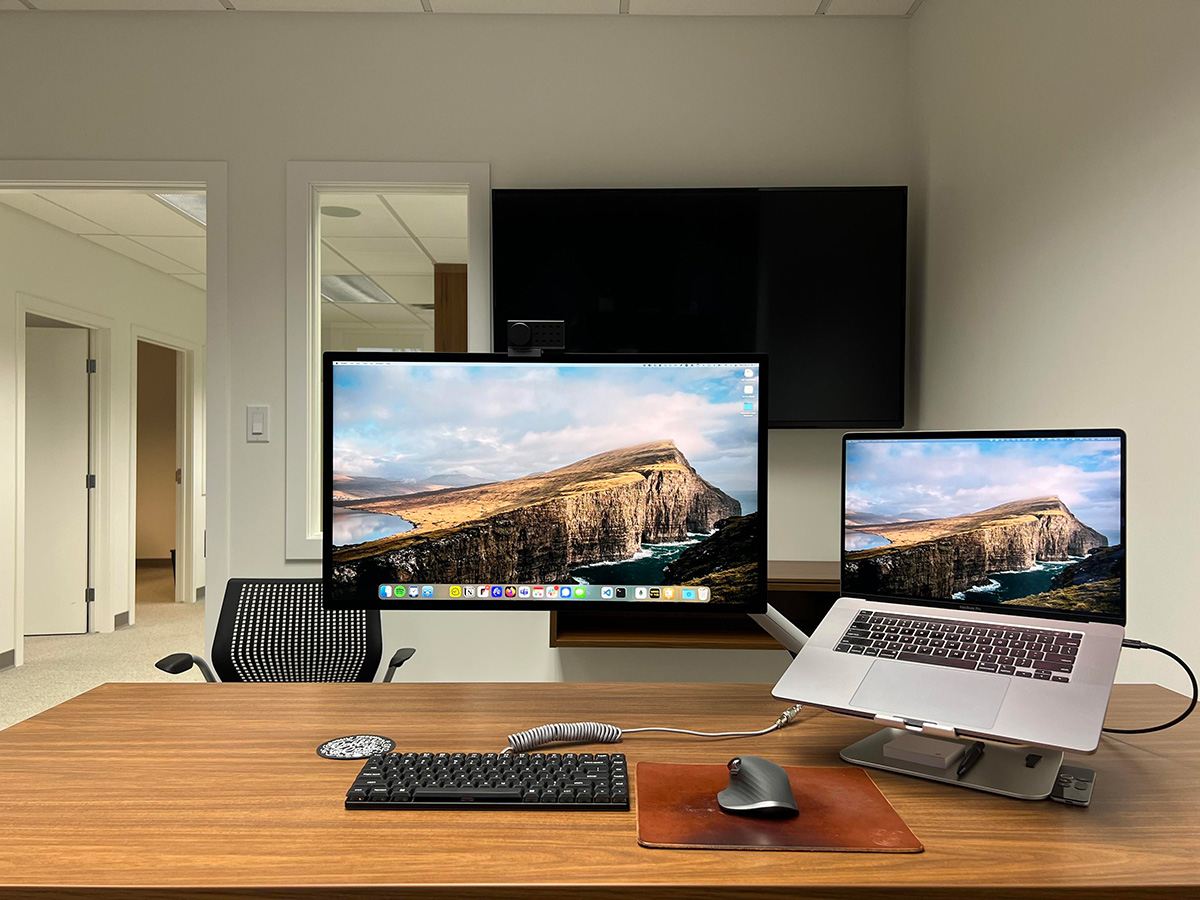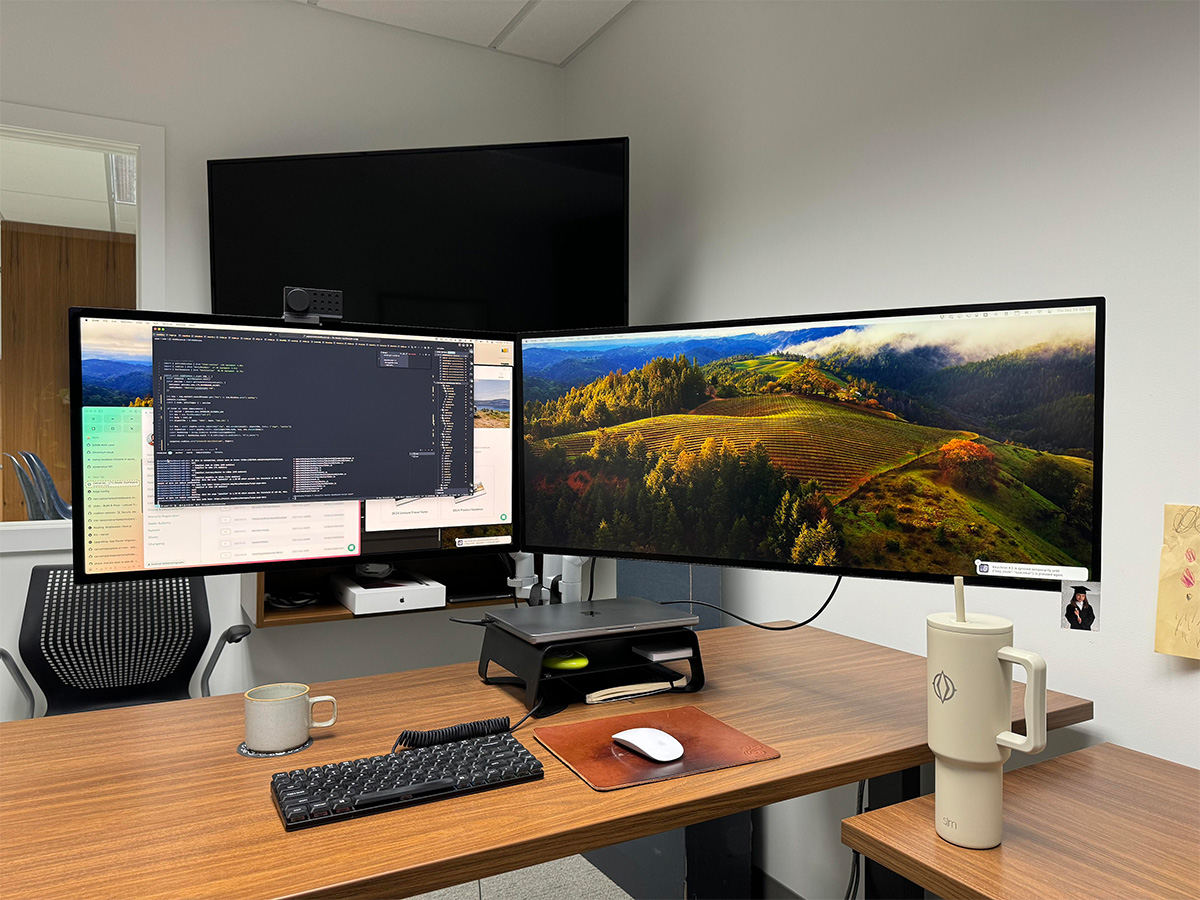My first foray into the world of mechanical keyboards actually started with the Keychron K8. I backed their Kickstarter launch in July of 2020, and received it in September. Unfortunately, I was not a fan, and I sold it on Kijiji a few months later.

During this time, Keychron had another Kickstarter launch, this time for a low-profile mechanical keyboard. Since I didn't enjoy the experience of the K8, I thought that maybe the transition to a low-profile mechanical would be easier (I was using a Magic Keyboard at the time). So I backed this project as well. I ordered the K3 with the RGB backlight and white optical hot-swappable switches.
Since this keyboard has been out for a few years and has been essentially replaced in the product lineup by the K3 v2, the K3 Pro, and the K3 Max, I'm not going to thoroughly review it. I'll consider this more of a "post-mortem".
Firstly, this was my first real try at a mechanical keyboard. I'm not counting the K8 because I sold it so quickly and didn't really give it a chance. This K1 was my daily driver for nearly three years – so it's safe to say this is what sold me on mechanical keyboards.

First Impressions
This keyboard is light. The body is aluminum framed with a plastic body. I wouldn't say it feels overly solid, but it's nice and portable – you can easily tuck it into your backpack or bag for moving to/from the office.
Since this is the first version, it doesn't have adjustable feet – just taller rubber bumpers on the top edge. I prefer to use my keyboard with a bit of an incline, so this isn't ideal, but has been corrected with the K3 v2.
Swapping the switches and keycaps is as easy as one would expect. The MX-style stem on the switches and keycaps makes it easier to customize your K3 as well.
The battery is rated for 130 hours on Bluetooth or 68 hours with the backlight on, but I never really tested that capability as I use it almost exclusively plugged in.
Since this keyboard doesn't support QMK, I re-programmed some of the keys using Karabiner-Elements. It works quite well, but is dependent on that software being running on your computer. For example, I moved the delete key to a non-standard location, so if I tried to use the keyboard with a different computer, that key would not work as expected.
Switches
This was the biggest regret about buying the optical hot-swappable version. Since this was my first keeb, I didn't really know what I was getting into. Knowing that now, I probably should have bought the Gateron fully mechanical switch version – there's simply very few optical switch options out there.
- Optical White Switches - a very light force linear switch.
- Optical Brown Switches - my first tactile switch. I found them mushy and too noisy for the office.
- Optical Black Switches - another linear switch, but requiring a bit more force. I used these for a long time.
- Optical Mint Switches - an early bump tactile switch that requires a bit more operating force. My personal favourite – a good balance between feeling and noise level. This is what I currently have installed.
Keycaps
The keycaps that came with the keyboard were PBT shine-through. They were terrible – the finish started rubbing off of a handful of the keys within a few months. Thankfully, Keychron released a low-profile double shot keycap set, so I ordered those on my next switch order.
Layout
I've always used a full-sized keyboard, and largely with a number pad, so I expected this to be a difficult shift. I didn't really have time to get used to the tenkeyless format of the K8, but this is basically a more compact version of that layout. The most challenging adaptation for me was the right shift key size – it's about 2/3 the size of a full sized shift. Once I got used to that, I've decided that 75% is the perfect format for me. I'd also like to try some even smaller formats in the future.
Overall
There's a number of folks who have done foam or tape mods to the K3. Unfortunately, I only discovered these a few months ago, but I did end up implementing a foam mod. Basically, I just opened the case and put one of the foam pieces that shipped in the box inside the case. It made a fairly reasonable difference in the pitch of the keyboard sounds.

If you're thinking about getting a mechanical keyboard for the first time, I would definitely recommend trying the Keychron K3. It's a solid entry-level mechanical keyboard that is perfect for transitioning into (somewhat daunting) world of mechanical keyboards. With the exception of the adjustable feet, the K3 V2 seems like it's pretty much the same experience. For QMK programming ability as well as compatibility with the wider range of low-profile Gateron hot-swappable switches, I'd recommend giving the K3 Pro a try. The K3 Max also has acoustic foam which addresses some of the mods, as well as 2.4GHz connectivity for faster polling rates and reduced interference.
I've since replaced it with the NuPhy Air75 V2.